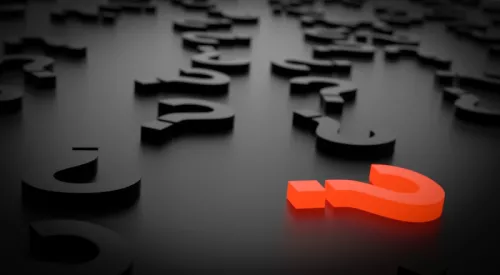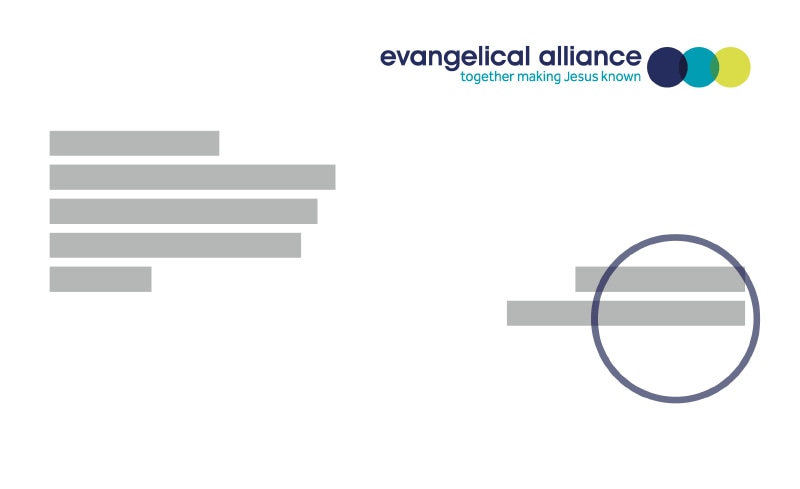My social media feed occasionally reminds me what was happening a year ago today. If I were to tell the guy in that photo what the world would be like a year later, it would take some time.
All of us are getting used to new ways of doing things, new habits and new ways of seeing the world. Let’s begin with the superficial changes. Before COVID, I had never elbow-bumped anyone; now, extending my arm joint seems as natural as a handshake. Before COVID, coughs used to be background noise; now, they are enough to send whole rooms reaching for their facemasks in hypervigilant panics. Before COVID, I had participated in one Zoom call; now, I sometimes think about whether I have to unmute myself when talking to my family at the kitchen table.
It’s been difficult. It’s been bewildering. But one thing that is helping me navigate this season is asking, ‘What is going on?’ and identifying the themes. Discovering and reflecting on these five tensions that I see in the world has helped me press on and be more hopeful in recent days.
1. This is a time of social distancing AND community proximity
I hate the phrase social distancing, partly because I am relational to the core and miss hugs, high fives and firm handshakes. But also because it isn’t an accurate description of what is being asked of us or what is happening. We are physically distancing, but socially we are closer. We are spending more time with each other, albeit sometimes looking down a camera lens.
Communities have been looking out for one another in extraordinary ways. I have never spent more time with my family. Some of the loneliest people in our community have been drawn more closely into our church community. Stronger relational bonds are good news for society and good news for the gospel.
2. This is a time of slowing down AND speeding up
As a society, we are not good at slow. If the digital spinning wheel doesn’t stop and the video doesn’t start within five seconds, like most people I am tempted to scroll down and find another piece of media that loads quicker to satisfy my appetite for entertainment.
Many of us are used to an incessant schedule of family, work, travel, church, friends and leisure. The lockdown régime has put the brakes on a significant amount of activity. Some people (written through slightly gritted, envious teeth) have found time to learn Portuguese or write a novel, while others (I speak with a little more experience here) have endured the increased pressures of working from home while attempting homeschooling.
At the same time, sociologists say that pandemics press the fast forward button on history. Seeing a family doctor via video link, restaurant home delivery and virtual classrooms have become increasingly normal. It is no wonder we feel stretched and disorientated with such inconsistent changes to the pace of life.
3. This is a time of the best AND worst in humanity
My wife and I waited until the peak had past to watch the movie Contagion. The similarities between the plot and real-life events are terrifying, but perhaps the scariest moments in the film are those of the social unrest and looting when food shortages occur. Thankfully, we didn’t reach those levels in the real world, but the headlines of hand gel hoarding and fights in supermarket aisles over toilet roll dominated the early days of lockdown. These acts of selfishness contrast starkly against the many acts of self-sacrifice we have seen and clapped from our doorsteps. The pressure cooker of a global pandemic has highlighted in most of us both our frailty and fortitude.
4. This is a time that requires perseverance in a quick fix world
Do you remember ‘normal’ natural disasters? Firstly, they mostly happened a long way away and never usually affected you. Secondly, in terms of media coverage, they were all over quite quickly; within a few days, the rescue workers had done their thing and the cameras and reporters turned their attention elsewhere.
Coronavirus has been completely different. It has affected all of us and is not going away. The problem is that our cultural narrative and habits don’t prepare us for the long haul. When something breaks, we buy a new, better something with next day delivery. When our box set gets boring, we choose another one. When we sniff the end of lockdown and the sun comes out, we flock to the beach. This season has forced all of us to exercise muscles of endurance and discipline unnaturally in an instant, on demand culture.
5. This is a time of economic contraction AND kingdom expansion
April saw the biggest monthly fall in the UK’s GDP on record. Retailers and restaurants have begun to reopen, but it will be a long road to recovery. The leading concerns of churches moving forward are the long-term economic consequences and the increase in mental health problems. The path ahead is uncertain and uncomfortable. And yet, somehow, in the midst of this, there is an encouraging openness to the gospel.
One in three young adults have attended an online church service since lockdown began, and one in 20 people who have never prayed before have started to do so. Fifty-nine per cent of church leaders have seen an increase in people wanting to find out more about the Christian faith. We should be encouraged that, despite the challenges, God is on the move and people are spiritually hungry and searching for meaning and hope.
As a good news person, I read the signs of the times to help me effectively communicate the best news of all in the season I find myself in. As a human, I do the same because understanding the environment I am in helps me navigate and make sense of the times. I hope my insights have helped you do the same and help us all to be good news people in a coronavirus world.
"As a good news person, I read the signs of the times to help me effectively communicate the best news of all in the season I find myself in."



